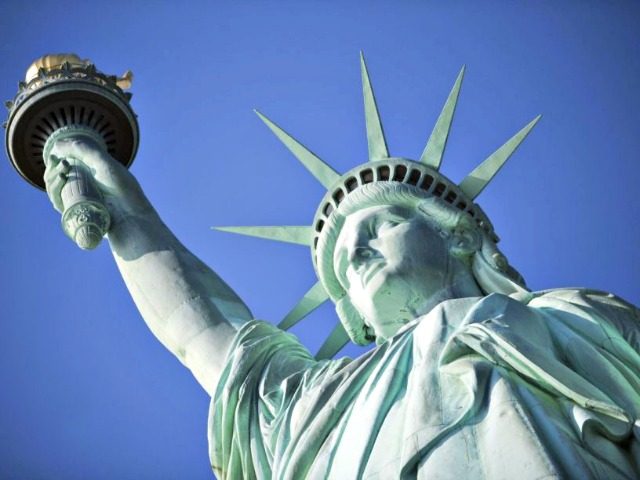President Trump’s senior adviser, Stephen Miller, had to give a history lesson to CNN’s Jim Acosta at a press briefing at the White House on Wednesday about the Statue of Liberty and the “The New Colossus” poem that’s on the base of the statue.
“What the president is proposing here does not seem like it’s in keeping with American tradition when it comes to immigration,” Acosta said.
“The Statue of Liberty says, ‘Give me your tired, your poor, your huddled masses yearning to breathe free,’” Acosta read from a paper. “It doesn’t say anything about speaking English or being able to be a computer programmer.”
“Aren’t you trying to change what it means to be an immigrant coming into this country if you’re telling them you have to speak English?” Acosta said. “Can’t people learn to speak English when they get here?”
Miller had earlier informed Acosta that to become a naturalized U.S. citizen speaking English is already required. But, moreover, Miller pointed out that the poem Acosta quoted was not on the original statue but was added later.
“When the Goddess of Liberty was given to the United States (in 1886) its donor’s agenda was to burnish France’s republican roots after the oppressive reign of Napoleon III and to celebrate the two nations’ commitment to the principles of liberty,” the New York Times reported in 2011.
“The only immigrants mentioned at the dedication in 1886 were the ‘illustrious descendants of the French nobility’ who fought on behalf of the United States against Britain during the American Revolution,” the Times reported.
Emma Lazarus’s poem only belatedly became synonymous with the Statute of Liberty,” the Times reported.
“Finally in 1903, after relentless lobbying by a friend of Lazarus who was descended from Alexander Hamilton, himself an immigrant, it was ‘affixed to the pedestal as an ex post facto inscription; the art historian Marvin Trachtenberg wrote and the Times reported.
Also, the first federal immigration law strictly controlled which people were allowed to enter the United States, according to government records — the Immigration Act of 1882:
This act was the first comprehensive immigration law to deal with federal oversight and categories of exclusion. As to oversight, the law gave power over immigration enforcement to the secretary of the treasury, who was already responsible for overseeing customs in U.S. ports. The Treasury Department was mandated to issue regulations for the orderly admission of immigrants and to collect a “head tax” of fifty cents for each arriving immigrant to defray administrative expenses.
The Treasury secretary was authorized to enter into contracts with individual states to administer immigration entry. As to categories of those deemed undesirable, the act prohibited the entry of “any convict, lunatic, idiot, or any person unable to take care of himself or herself without becoming a public charge.” Carried over from the immigration rules of several states, the “public charge” doctrine served to bar arriving foreigners who could not show the financial ability to support themselves. Foreigners denied entry were returned to their starting points at the expense of the ship owners.

COMMENTS
Please let us know if you're having issues with commenting.